
While tomatoes are incredibly rewarding to grow, like everything else in life, they are not without their pitfalls.
We are not the only ones who love tomatoes. There are other animals, birds, insect pests, and soil-borne problems that also love these vibrant, delicious plants.
It is also true that tomatoes are loved by other plants. You can help develop beneficial relationships for them.
Companion Planting – Symbiotic Relationships
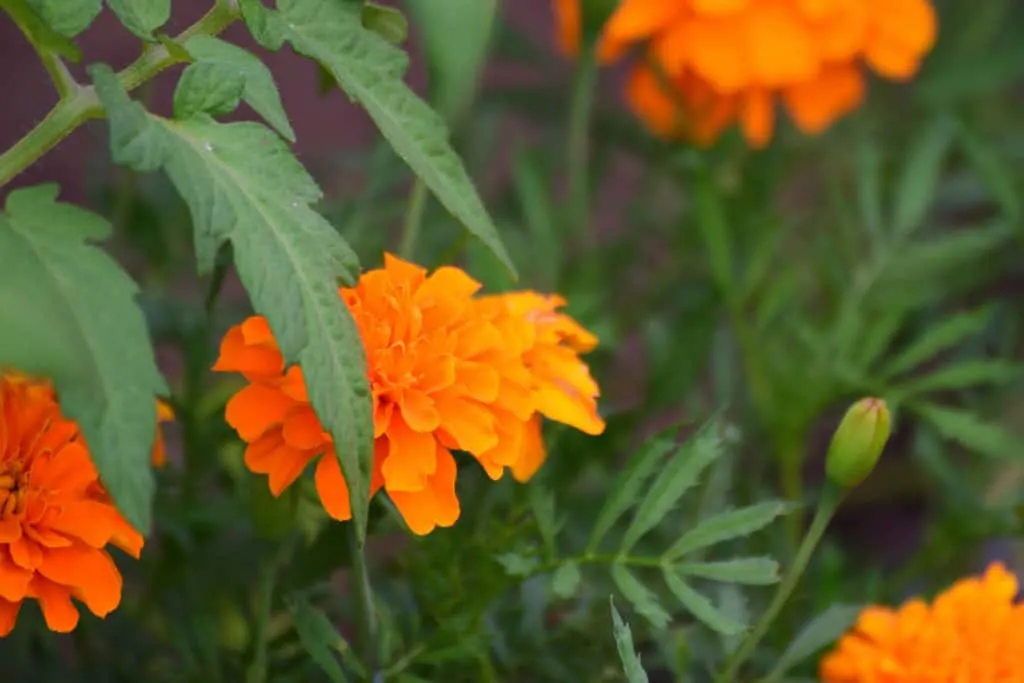
Maybe you have seen an example of a symbiotic relationship in a documentary or nature show. It might be a gorgeous, majestic sea turtle that visits a certain spot every year. Interestingly, many species of fish come out to clean it. Or, a giant, deadly shark that has little fish swimming in and around its mouth. And they are cleaning its teeth!
These are just two examples of unique symbiotic relationships in the wild.
Plants Do It Too!
Incredibly, plants have many attributes that help out their neighbors.
A plant might be a nitrogen fixer. This means it takes nitrogen from the atmosphere and makes it available in the soil, improving the nitrogen uptake for all plants that surround it.
Or a plant might have long, deep, tough roots that help break up the soil. This allows it to release nutrients, making them more available for more shallow rooted plants.
As with wildlife, some plants are not good friends. One plant may grow aggressively, soaking up all the available nutrients and water and spreading all over the place. This essentially smothers nearby, less aggressive plants. Another plant might attract deer or rabbits to the garden. Then the hungry herbivores don’t discriminate and eat other precious plants during the visit.
In the case of marigolds, they do many friendly acts in the garden.
5 Reasons To Grow Marigolds With Your Tomato Plants
1. Marigolds attract bees and other tomato benefiting insects.
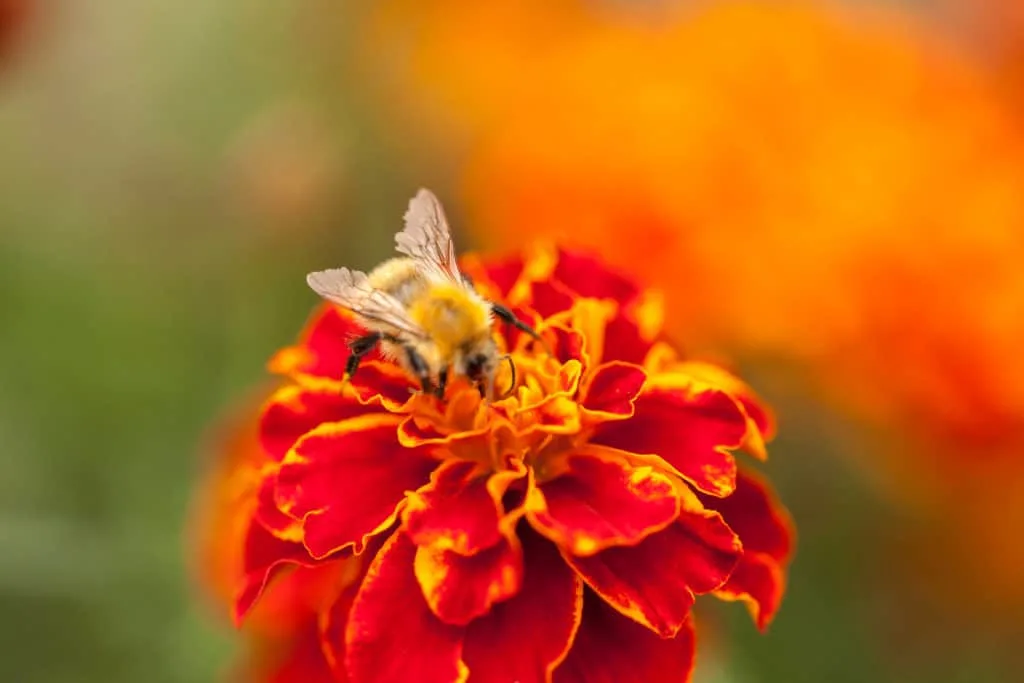
Who doesn’t love beautiful butterflies, bees, ladybugs, and other beneficial little beasts that visit the tomato garden?
Great to aid pollination, yes! Not only that, many of the insects that marigolds attract help to keep insect pests at bay such as aphids and caterpillars.
2. Marigolds act as a “trap crop” for slugs and snails.
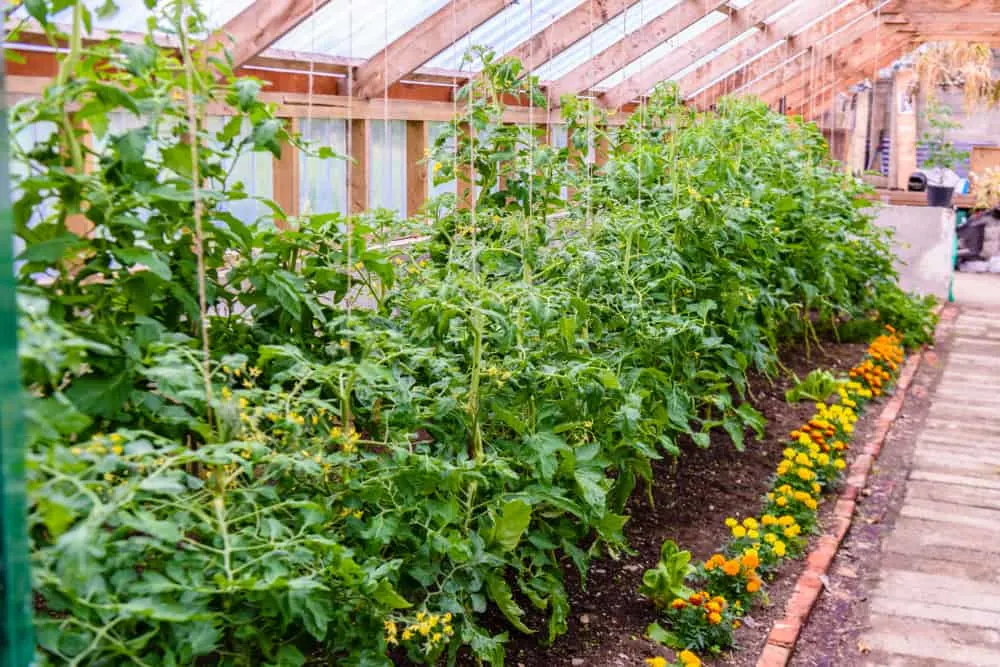
Slugs and snails love tomatoes. You may not even know they are there until you go to pick your juicy plump fruit. Then you find soft, squishy holes and the tell-tale slim trails left by these nocturnal robbers.
Luckily, they like marigolds even more making marigolds an effective “trap crop” for slugs and snails. The airy, fern-like marigold foliage make early morning search and destroy slug and snail hunting a breeze.
3. Marigolds deter animal tomato pests.
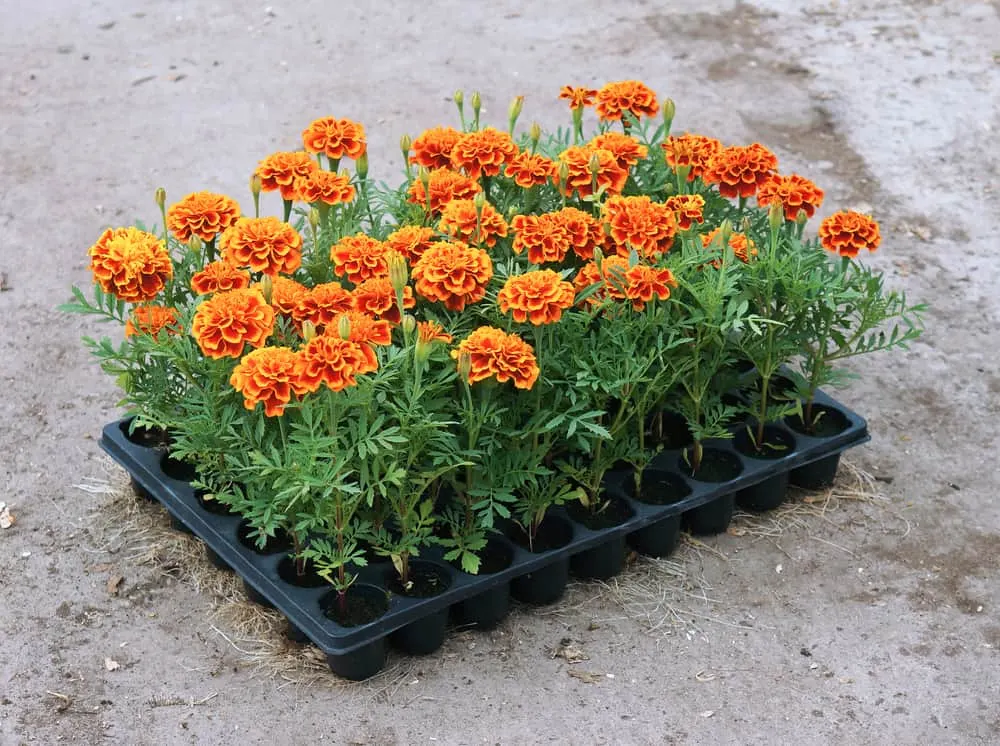
The strong odors that marigold plants make often deter other garden pests such as rabbits, deer, cats, and snakes. Okay, I don’t know that snakes eat tomatoes, but they can stay out of the veggie patch, as far as I’m concerned.
4. Marigolds help to keep soil healthy.
For the agricultural and home tomato grower, root knot nematodes can plague the tomato plants. They also bother some of their nightshade relatives such as peppers and eggplant.
Marigolds are extremely useful in this scenario. They trap and kill parasitic root knot nematodes. Plant marigolds thoroughly in areas known to be infested. Toxins in marigold roots seem to kill the nematode before it grows and reproduces.
5. Marigolds deter tomato worms.
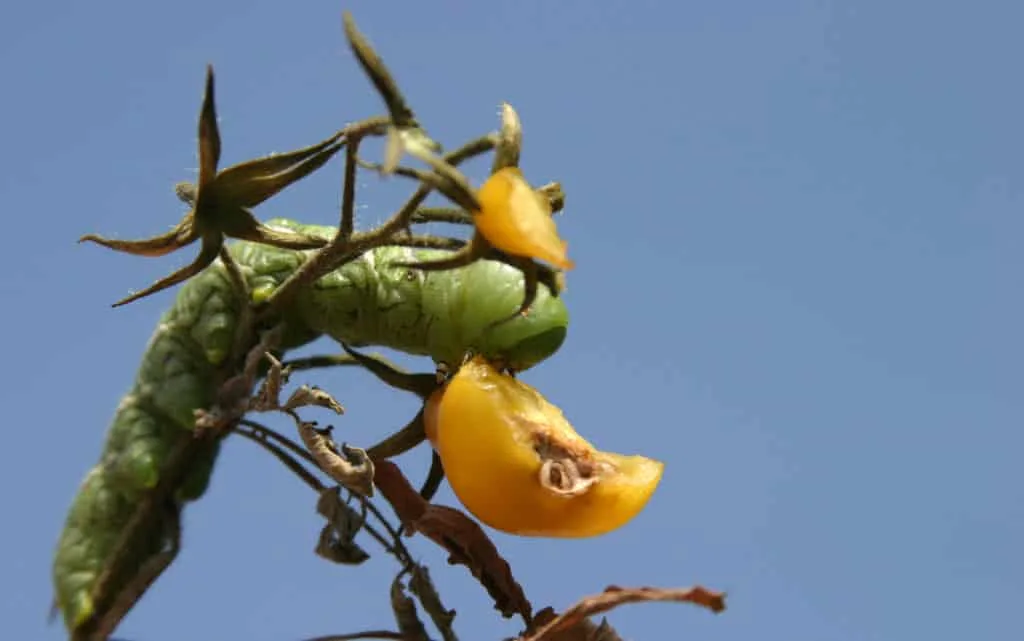
There are many worms and caterpillars that love tomatoes. Large moths begin their life as the dreaded Tomato Hornworm.
The way marigolds help deter these pests is twofold.
First, their strong odor is thought to repel the moths, deterring them from laying eggs. Secondly, marigolds attract many beneficial insects including parasitic wasps which are harmful predators to tomato hornworms and other nuisance worms and caterpillars.
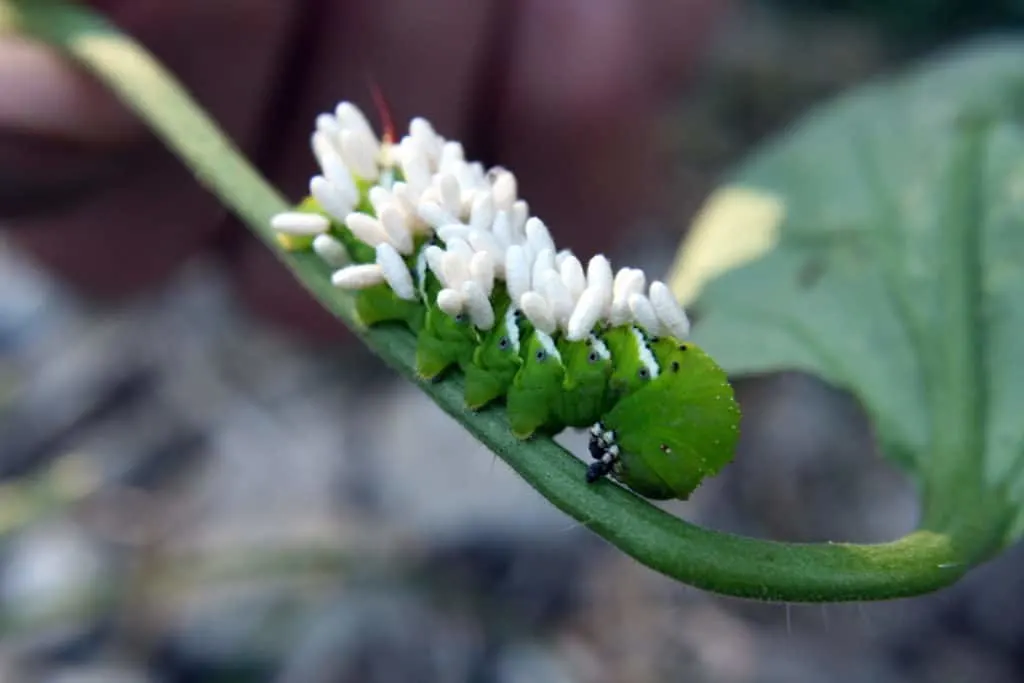
Marigolds and Tomatoes
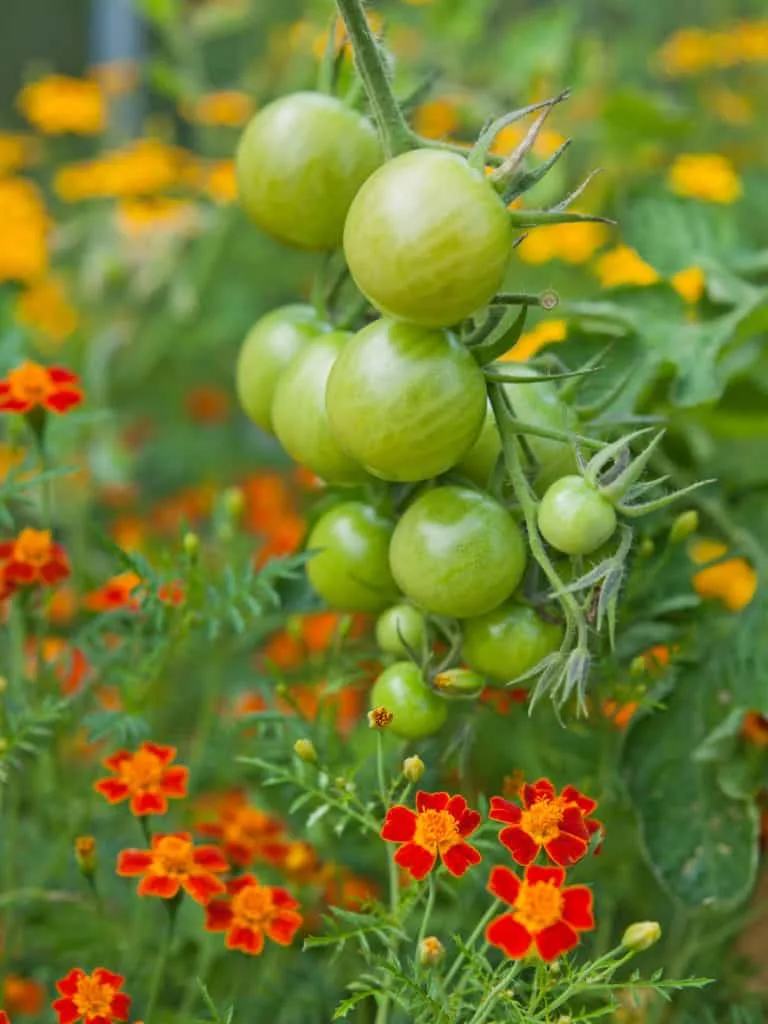
So many great ways to use marigolds with tomato plants! They could be interplanted in the raised bed or hanging basket. They could form an impenetrable border around the tomato patch. Smaller varieties might be planted closer to the tomato plants, while larger marigolds could be planted slightly farther away.
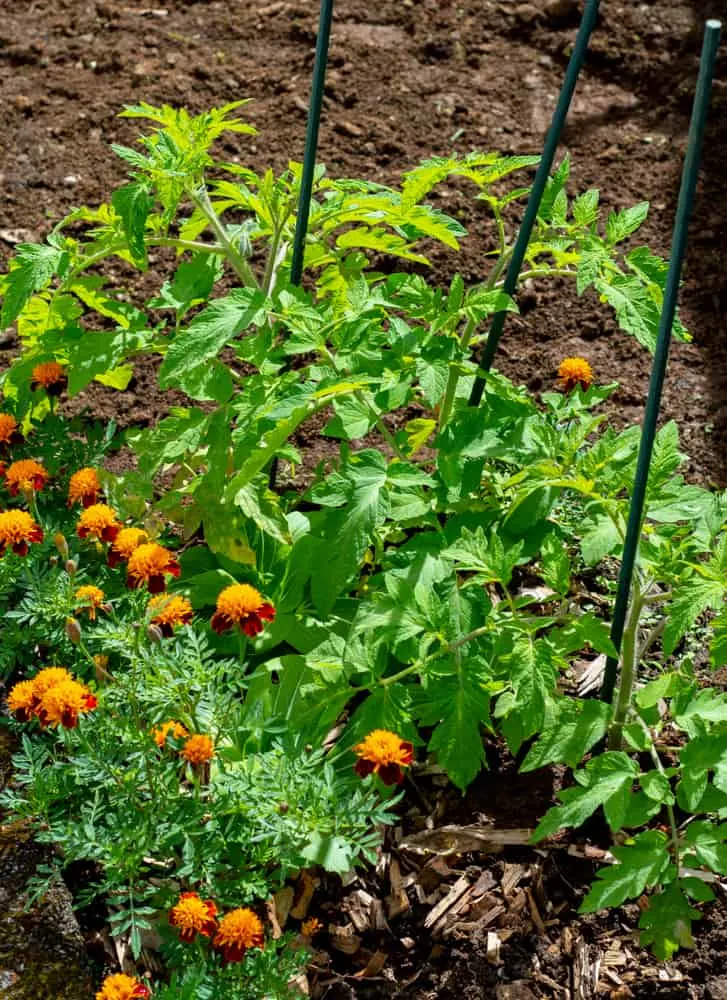
Types of Marigolds
There are over 50 marigold (Tagetes) species. The three most popular for use in the garden are African marigold (T. erectus), French marigold (T. patula), and Signet marigold (T. tenuifolia).
Pot marigolds are wonderful in the garden but are Calendula (Calendula officinalis) plants.
They don’t hold all the same beneficial attributes in the garden, although they do have many fantastic benefits too.
African marigolds are the tallest. They might be planted surrounding the tomato patch. These tough plants grow 1 to 3 feet (30 to 120 cm) tall with large double flowers in hot shades of yellows, oranges, reds, and whites.

French marigolds are more compact with fern-like foliage. They love the heat, have a long bloom time, and grow 6 to 18 inches (15 to 45 cm) tall and wide. Their blooms are double and also come in warm colors of oranges, yellows, reds, and whites.

Signet marigolds make small single flowers that bloom profusely and abundantly in fragrant mounds on plants of lacy foliage 12 inches (30 cm) tall and wide. Lemon gem and tangerine gem are excellent examples which are citrusy smelling heirlooms.
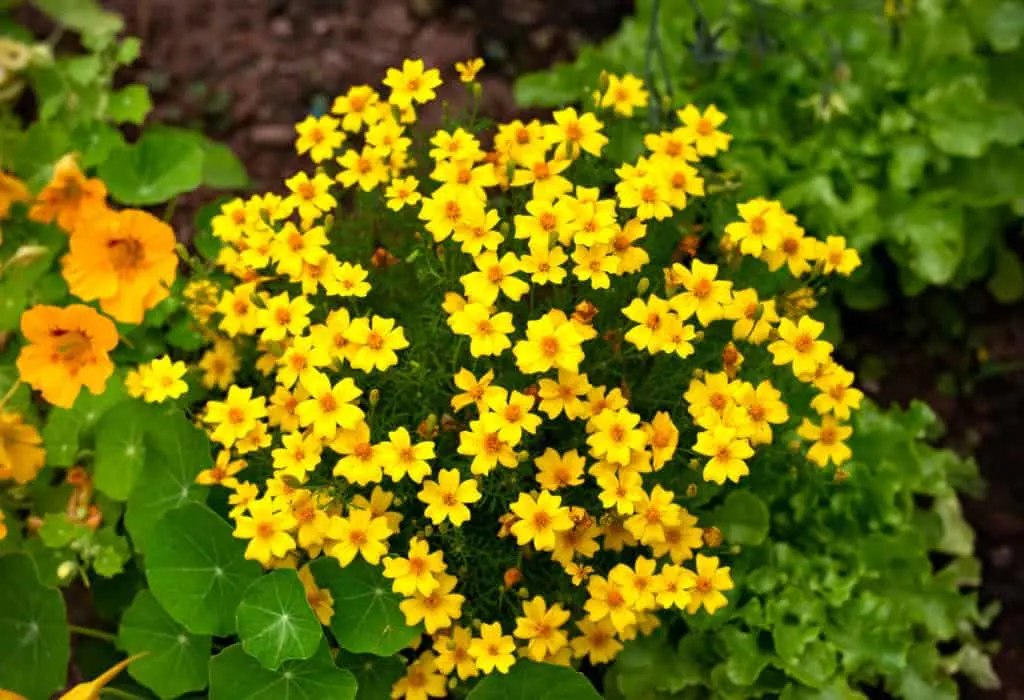
Which Marigolds Are Best For Tomatoes?
Each and every marigold plant in the tomato garden will have its benefits. If you are facing a particular problem, try:
- Deer deterrent: African marigold.
- Root knot nematode: French marigold.
- Attract bees and beneficial insects: Signet marigold.
- Deter tomato worms and caterpillars: All of the above.
Mix and match a variety of marigolds to see which ones you like best. See what works well to prevent potential tomato problems.
Quick Tip: In general, Signet marigolds do great without deadheading, where African and French marigolds bloom more with deadheading.
How to Grow Marigolds
Marigolds are an easy to grow frost-tender annual flower. Plants can be started indoors 4 weeks before the last frost date or by direct seeding in the garden after the last fear of frost has passed. They begin to bloom about 10 weeks later.
You can purchase many varieties of marigold seeds from here at True Leaf Market.
African, French, and Signet marigolds are a popular bedding plant so you can save yourself the trouble and buy transplants perfectly ready to plant near your tomatoes.

Marigolds like many of the same conditions that tomatoes thrive in. Marigolds prefer to stay evenly moist in well drained soil in full sun. This is a great start for both marigolds and tomatoes. African and Signet marigolds can tolerate hotter, drier sites. French marigolds tend to prefer moist conditions.
Depending on the type of marigold you grow you may have great success with pinching young plants for bushier growth and deadheading to encourage more blossoms.
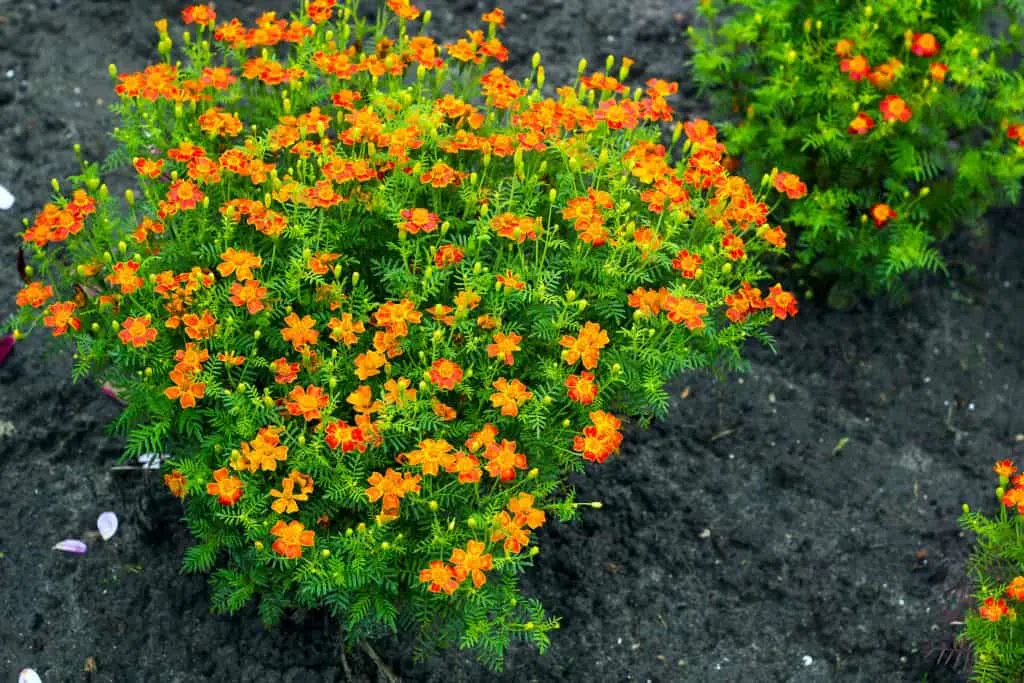
Other Companion Plants That Benefit Tomatoes
Many other plants help your tomato plants thrive. Take a look at our list of eight beneficial companion plants to grow next to your tomatoes.
And, perhaps more importantly, make sure you keep these seven common garden plants far, far away from your tomatoes. You’ll see why when you read the article.
